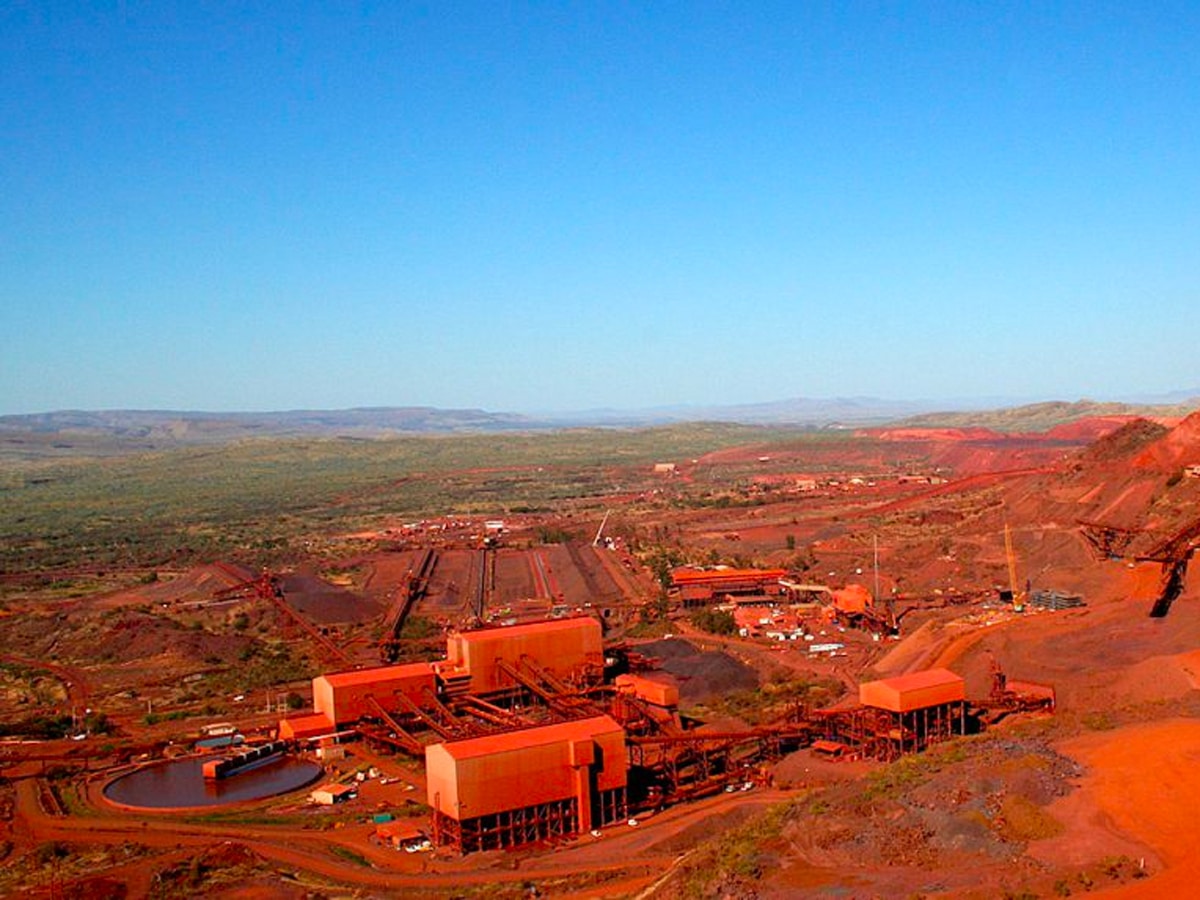The average Australian salary is $1,888.80 per week or $98,217.60 annually, according to the latest data from the Australian Bureau of Statistics. This represents an increase of 4.5% year-on-year and you won’t be surprised to find out mining remains the highest-paying sector with an average salary of $2,951.80 per week. You also won’t be surprised to know that the public sector remains the most lucrative on average with males earning $2,183.30 per week and females earning $1,956.80 per week.
It’s worth noting that the median weekly earnings were much lower at $1,300 for all employees ($67,600 annually), $1,509 for males ($78,468 annually) and $1,130 for females ($58,760 annually), according to the ABS. This is due to skewed distribution with a long tail, or in simpler terms, there are small numbers of high-paid employees that skew the mean higher.
Average Salary Data at a Glance
- Average salary in Australia: $1,888.80 per week ($98,217.60 annually)
- Males: $2,183.30 (public), and $1,946.90 (private)
- Females: $1,956.80 (public), and $1,658.30 (private)
- Highest paying Industry: Mining at $2,951.80 per week ($153,493.60 annually)
- Male: $3,049.30 ($158,563.60 annually)
- Female: $2,568.90 ($133,582.80 annually)
- Highest earning state: Western Australia at $2,107.70 per week ($109,600.40 annually)
Still, if you want to know how you stack up with your peers we’ve broken down the average Australian salary by age, industry, and state in detail below.
Detailed Breakdown of the Average Salary in Australia
RELATED: These are the highest-paying jobs in Australia.

Average Australian Salary by Age
Full-time worker’s average salary in Australia by age:
- 20 years and under: $949.90 per week ($49,394.80 annually)
- 21-34 years old: $1,679.70 per week ($87,344.40 annually)
- 35-44 years old: $2,167.50 per week ($112,710 annually)
- 45-54 years old: $2,234.80 per week ($116,209.60 annually)
- 55 years and older: $2,041.10 per week ($106,137.20 annually)
Part-time worker’s average salary in Australia by age:
- 20 years and under: $347.90 per week ($18,090.80 annually)
- 21-34 years old: $734.60 per week ($3,8199.20 annually)
- 35-44 years old: $993.80 per week ($51,677.60 annually)
- 45-54 years old: $995.10 per week ($51,745.20 annually)
- 55 years and older: $918.30 per week ($47,751.60 annually)
Age has a significant impact on salaries in Australia. For example, people in casual employment receive a wage according to their age – the younger they are, the lower the wage. According to the ABS, between 45 and 54 is when you are earning the most with an average salary of $2,396.10 per week ($124,597.20 annually) for a full-time worker.
Young people suffer when it comes to wages, and this can be put down to job types, as young people often rely on casual work while they study. The youngest age bracket provided by the ABS suggests full-time workers under the age of 20 earn $949.90 per week while part-time workers make $347.90 per week.
However, a leading research analyst at the University of Sydney, Damien Oliver suggests there may also be aspects of discrimination at play. “There is plenty of evidence to show that the labour market is strong and sophisticated enough to promote employment opportunities for young people without resorting to discrimination,” he writes.
This information supports the growing theme of an increasingly hostile environment for many young millennials in the Australian workforce. The average salary for persons under 20 is the lowest, which is about 7 per cent of Australia’s labour force. Additionally, the average wage earned by people aged 21-34 is also relatively low at $1,679.70 per week ($87,344.40 annually) for a full-timer and $734.60 for a part-timer.

Average Australian Salary by Industry
Wage growth in Australia saw an increase of 4.5% year-on-year, however, the same industries continue to dominate this list. The mining industry remains the most lucrative with an average weekly salary of $2,701.50 or $153,493.60 annually. On the other hand, the accommodation and food services industry has the lowest average salary with average weekly earnings of $1,397.20 or $72,654.40 per year.
Different industries have different wage brackets, and depending on what industry you go into, this table below will give you a better idea of wage opportunities.
| Industry | Persons | Males | Females |
|---|---|---|---|
| Mining | $2,951.80 | $3,049.30 | $2,568.90 |
| Manufacturing | $1,695.60 | $1,743.80 | $1,523.60 |
| Electricity, gas, water & waste services | $2,212.60 | $2,266.20 | $2,023.40 |
| Construction | $1,779.90 | $1,795.80 | $1,674.10 |
| Wholesale trade | $1,742.00 | $1,811.50 | $1,581.60 |
| Retail trade | $1,435.10 | $1,503.10 | $1,346.10 |
| Accommodation & food services | $1,397.20 | $1,454.30 | $1,315.40 |
| Transport, postal & warehousing | $1,827.50 | $1,855.50 | $1,714.20 |
| Information media & telecommunications | $2,406.10 | $2,536.20 | $2,126.80 |
| Financial & insurance services | $2,182.70 | $2,378.70 | $1,962.30 |
| Rental, hiring & real estate services | $1,764.90 | $1,895.70 | $1,616.60 |
| Professional, scientific & technical services | $2,222.80 | $2,468.60 | $1,889.20 |
| Administrative & support services | $1,707.40 | $1,827.70 | $1,506.30 |
| Public administration & safety | $2,007.80 | $2,056.10 | $1,948.60 |
| Education & training | $1,995.10 | $2,113.70 | $1,932.80 |
| Health care & social assistance | $1,875.00 | $2,188.90 | $1,737.80 |
| Arts & recreation services | $1,698.80 | $1,820.10 | $1,537.20 |
| Other services | $1,439.10 | $1,486.90 | $1,375.10 |
| Total all industries | $1,888.80 | $1,982.80 | $1,375.10 |
Join Our Exclusive Community!
Keep up with the latest trends, best stories, and crucial updates from Man of Many direct to your inbox.

Average Australian Salary by State
The Western Australian mining boom is still leading their economy and the average salary is lifting accordingly, beating the public sector heart of Australia this year. The average WA worker has an average salary of $2,107.70 per week or $109,600.40 annually, besting ACT workers who rake in $2,087.60 per week or $108,555.20 annually. Comparatively, Tasmanians are barely scraping by with an average weekly salary of $1,670.00 or $86,840 annually.
| Persons | Male | Female | |
|---|---|---|---|
| NSW | $1,891.40 | $1,977.50 | $1,760.20 |
| VIC | $1,858.10 | $1,940.90 | $1,589.00 |
| QLD | $1,844.70 | $1,931.50 | $1,533.00 |
| SA | $1,735.40 | $1,793.80 | $1,542.40 |
| WA | $2,107.70 | $2,301.60 | $1,631.30 |
| TAS | $1,670.00 | $1,704.30 | $1,490.70 |
| NT | $1,832.80 | $1,974.90 | $1,592.70 |
| ACT | $2,087.60 | $2,189.90 | $1,862.10 |

How Large is the Gender Pay Gap in Australia?
- Average Australian salary for men – $2,078.40 per week
- Average Australian salary for females – $1,768.10 per week
Gender has a strong impact on the average income of Australians. And while the weekly earnings of females continue to rise at a faster rate than men, the weekly income for males is still $310.30 higher than females.
Whilst the gender pay gap is slowly getting smaller, it still exists. This pay gap is evident in the overwhelming majority of industries, including modelling and sex work, with the gender pay gap nearing $1b per week, according to figures reported by news.com.au. Workplace Gender Equality Agency (WGEA) director Libby Lyons said even before the COVID-19 pandemic hit, Australian employers had become “complacent” about gender equality. One shocking reality is that gender pay gaps are often influenced by discrimination and bias.
The pay gap is also influenced by women and men working in different industries and jobs, with women dominating part-time and casual work. Also, women take up a huge share of unpaid caring and domestic work and spend greater time out of the workforce which impacts their ability to work in senior roles.
| Males | Full-time adult average weekly ordinary time earnings | $1,982.80 | 4.0% |
| Full-time adult average weekly total earnings | $2,078.40 | 3.7% | |
| All employees average weekly total earnings | $1,672.70 | 3.2% | |
| Females | Full-time adult average weekly ordinary time earnings | $1,744.80 | 5.5% |
| Full-time adult average weekly total earnings | $1,768.10 | 5.3% | |
| All employees average weekly total earnings | $1,202.30 | 5.1% | |
| Persons | Full-time adult average weekly ordinary time earnings | $1,888.80 | 4.5% |
| Full-time adult average weekly total earnings | $1,955.20 | 4.2% | |
| All employees average weekly total earnings | $1,432.60 | 3.9% |

Average Australian Salary Over Time
With the average salary in Australia sitting at $1,888.80 per week, the average annual wage has skyrocketed beyond $98,217.60 annually (pre-tax). However, the year-on-year increases highlight an issue with wage growth. Aussie full-time workers may be earning 4.5 per cent more than they were last year, but the rate is barely ahead of Australia’s inflation rate that’s in a recovery stage and sitting around 4.1%, according to the Consumer Price Index.
| Persons | Males ($) | Females ($) | |
|---|---|---|---|
| May 2012 | $1,401.50 | $1,493.60 | $1,245.50 |
| Nov 2012 | $1,441.00 | $1,533.00 | $1,281.80 |
| May 2013 | $1,464.40 | $1,555.70 | $1,301.60 |
| Nov 2013 | $1483.50 | $1,574.90 | $1,323.40 |
| May 2014 | $1,502.50 | $1,604.70 | $1,329.90 |
| Nov 2014 | $1,528.40 | $1,634.50 | $1,351.70 |
| May 2015 | $1,537.30 | $1,641.60 | $1,368.50 |
| Nov 2015 | $1,556.50 | $1,654.70 | $1,392.00 |
| May 2016 | $1,568.30 | $1,661.70 | $1,411.30 |
| Nov 2016 | $1,584.30 | $1,677.40 | $1,430.20 |
| May 2017 | $1,594.10 | $1,683.60 | $1,444.90 |
| Nov 2017 | $1,615.30 | $1,704.60 | $1,466.60 |
| May 2018 | $1,631.10 | $1,717.40 | $1,488.20 |
| Nov 2018 | $1,651.30 | $1,735.80 | $1,512.90 |
| May 2019 | $1,681.60 | $1,768.00 | $1,542.60 |
| Nov 2019 | $1,706.20 | $1,791.40 | $1,567.90 |
| May 2020 | $1,762.20 | $1,853.10 | $1,618.00 |
| Nov 2020 | $1,757.20 | $1,842.50 | $1,619.40 |
| May 2021 | $1,783.70 | $1,876.60 | $1,633.20 |
| Nov 2021 | $1,794.60 | $1,885.60 | $1,648.70 |
| May 2022 | $1,816.10 | $1,912.50 | $1,665.80 |
| November 2023 | $1,888.80 | $1,982.80 | $1,744.80 |

Weekly Australian Tax Table
The Australian government offers a weekly tax table tool, which helps work out salaries, taxes, and everything in between. To use this table, you need to work out the withholding amount. Start by calculating your employee’s total weekly earnings and add any allowances and irregular payments that are to be included in this week’s pay to the normal weekly earnings, ignoring cents. Use the appropriate column to find the correct amount to withhold. If your employee is claiming the tax-free threshold, use column 2 or column 3 if not.
The next few steps are shown to you in the tool, which you can find here.
Your FAQs Answered
The average weekly ordinary time earnings for full-time adults in Australia is $1,888.80 per week or $98,217.60 annually, according to the latest data provided by the ABS.
Mining is the highest-paying industry in Australia with average weekly incomes marked at $2,951.80 or $153,493.6 per year.
The median salary for persons in Australia is $1,300 for all employees per week ($67,600 annually), $1,509 for males ($78,468 annually) and $1,130 for females ($58,760 annually).














